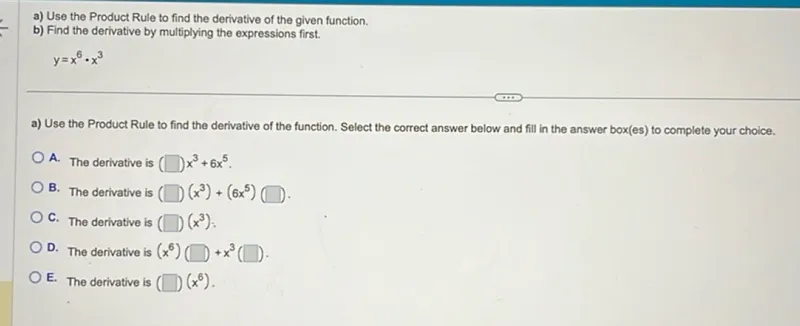Questions: Use the Product Rule to find the derivative of the given function. Find the derivative by multiplying the expressions first. y=x^6 * x^3 Use the Product Rule to find the derivative of the function. Select the correct answer below and fill in the answer box(es) to complete your choice. A. The derivative is () x^3+6 x^5. B. The derivative is (()(x^3)+(6 x^5) ). C. The derivative is ()(x^3) : D. The derivative is (x^6)()+x^3()). E. The derivative is ()(x^6).

Transcript text: Use the Product Rule to find the derivative of the given function.
Find the derivative by multiplying the expressions first.
\[
y=x^{6} \cdot x^{3}
\]
Use the Product Rule to find the derivative of the function. Select the correct answer below and fill in the answer box(es) to complete your choice.
A. The derivative is $(\square) x^{3}+6 x^{5}$.
B. The derivative is $\left.(\square)\left(x^{3}\right)+\left(6 x^{5}\right) \square\right)$.
C. The derivative is $(\square)\left(x^{3}\right)$ :
D. The derivative is $\left(x^{6}\right)\left(\square+x^{3}(\square)\right.$.
E. The derivative is $(\square)\left(x^{6}\right)$.





